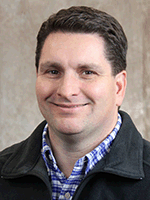
Prevent the challenging heifer cycle (part 2)
 By Dr. Noah Litherland, Vita Plus dairy technical specialist
By Dr. Noah Litherland, Vita Plus dairy technical specialist
At some point, every dairy is likely to experience a challenging heifer cycle. A challenging heifer cycle occurs when a portion of the heifer development phase does not go as planned and results in heifers that have lower-than-expected rates of growth, lung consolidation, or increased rate of non-completion of first lactation. The net result is often a reduced return on investment from the heifer program.
Challenge at heifer grower
Partnering with a heifer grower offers many advantages to a dairy. Heifer growers are specialists in youngstock and possess facilities, skills, and drive to produce quality heifers. However, just like at the parent farm, heifer growers can experience challenges as well. Using a heifer grower moves the farm from a closed to an open herd status. Heifers may not show clinical signs of disease and still shed pathogens in the calving pen, resulting in upstream challenges in the calf barn.
Mitigation strategies
- Develop a full understanding of the vaccination requirements needed to send heifers to a grower. Ideally, all farms sending heifers to the heifer grower should at least follow the minimum vaccination schedule outlined by the heifer grower in collaboration with attending veterinarians.
- Colostrum status before leaving the parent farm is likely the single largest influencer on success at the heifer grower.
- Increasing age and maturity of heifers leaving the parent farm decreases risk.
New facility start-up
The proportion of calves raised indoors and in groups has increased significantly in the past 10 years. Learning the new facility, training employees, dealing with unexpected challenges and/or calf health issues can kickstart a challenging heifer cycle.
Every calf facility is unique to the farm and has strengths and weaknesses. It is important to visit several nursery calf facilities and fully understand the philosophy and limitations of each system before finalizing design of a new facility. Avoid being lulled to sleep by the honeymoon phase of a new facility and instead take a proactive approach and be on the lookout for systemic constraints.
Mitigation strategies
- Partner with a team of experienced experts during the design process to minimize risk of pitfalls in design, including animal flow, seasonal ventilation, manure management, feeding system, cleaning, water quality management and facility capacity.
- We have learned that automated calf feeders can work well if maximum group size is less than 16 head per pen. All-in and all-out systems that allow for cleaning between groups is a key factor in optimizing efficiency of growth and health.
- We are still learning about pair housing, but key factors such as age at pairing, size at paring, and providing adequate resources for paired calves are all impactful to making the systems work for you.
Labor shortage or low competency in youngstock care
Labor is almost always in short supply on farms and skilled workers with a passion and skillset for youngstock care are even more difficult to find. A challenging heifer cycle can occur when workers do not have the competency or desire to excel at youngstock raising.
Mitigation strategies
- Hire workers with demonstrated experience and desire to work with youngstock. Many technical colleges and universities are graduating students with potential as youngstock managers, but they will need some on-farm training and time to refine their skillsets.
- Consider employee culture that cross-trains farm workers to aid in finding best-fit jobs.
- Develop job descriptions and detailed written management protocols with your youngstock team to ensure a defined plan is in place to care for calves and heifers and avoid pitfalls.
- Use a system of checks and balances to measure calf growth and health at key time points (birth bodyweight, serum total protein, weaning weight, transition weight, age at first breeding and bodyweight at calving) to provide feedback to workers.
- Making the most of calf growth and health data requires a commitment to capturing, storing, and evaluating the information.
Summary
Challenging heifer cycles are real on every farm. Heat stress, pathogens, new facility start-up and employee competence are just a few triggers for the start of a challenging heifer cycle. It takes a team approach to focus on the future and avoid challenging heifer cycles and mitigate risk and damage once a challenging heifer cycle has started.
| Category: |
Animal health Calf and heifer nutrition Colostrum management Employee management Equipment Facility design Starting Strong - Calf Care |

